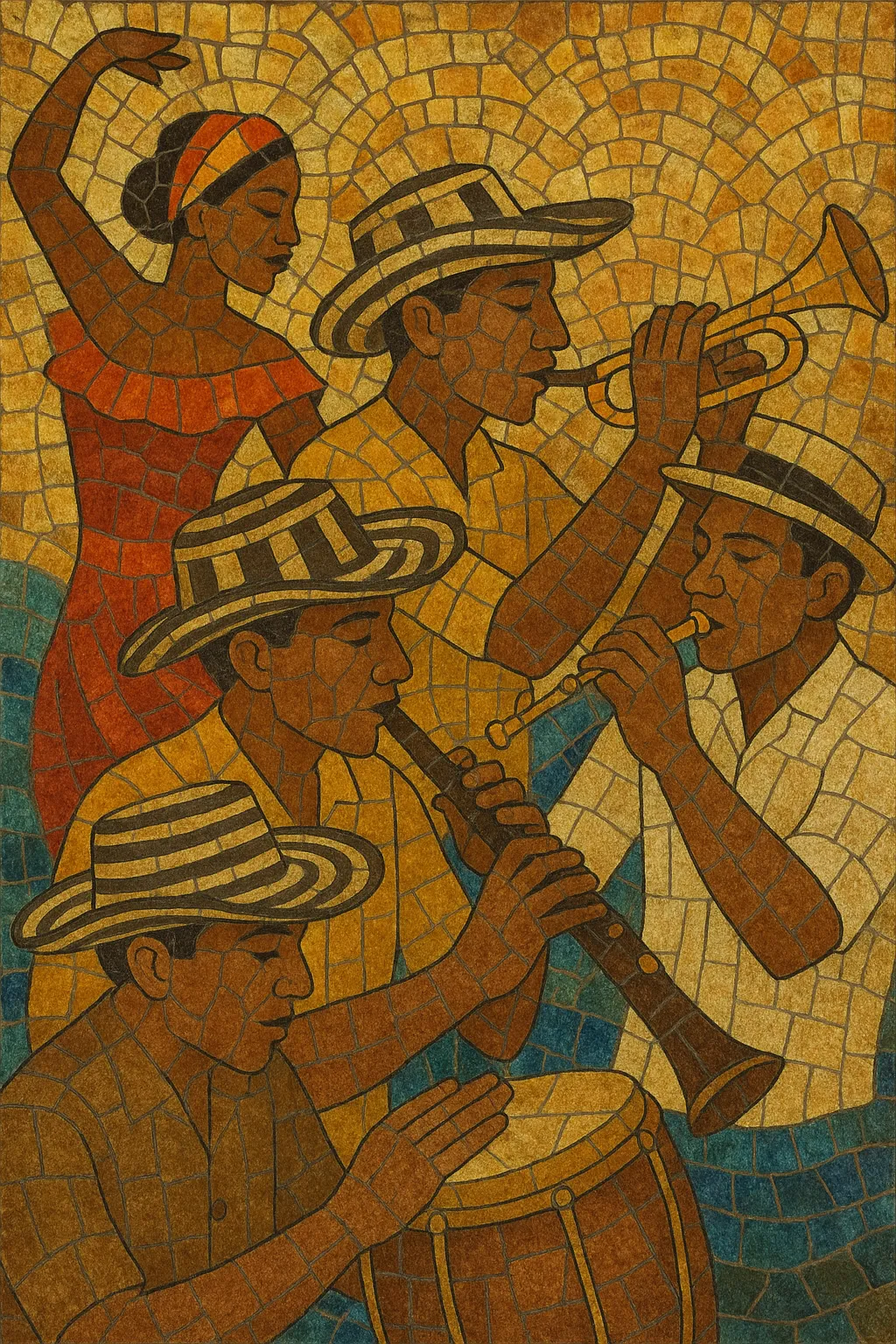Porro is a festive dance music from Colombia’s Caribbean coast, especially the Sinú River and Savanna regions of Córdoba, Sucre, Bolívar, and Atlántico. Closely related to cumbia yet distinct, it blends Indigenous gaita traditions, Afro-Colombian drumming, and European brass-band practices.
Traditionally performed by bandas pelayeras (rural brass bands) and by gaita ensembles, porro later blossomed in urban dance orchestras with clarinets, saxophones, trumpets, trombones, and a driving percussion section. It is typically in duple meter (2/4, sometimes felt in 4/4), with buoyant, syncopated patterns, a strong backbeat feel, and catchy call-and-response melodies. Two folkloric variants are often cited: porro palitiao (with a rimshot-style stick technique on the tambora) and porro tapao (a "covered" stroke approach), each shaping the groove in a distinctive way.
In the mid-20th century, arrangers such as Lucho Bermúdez and Pacho Galán transformed porro into a cosmopolitan big-band sound that became a symbol of Colombian tropical dance culture.
Porro emerged on Colombia’s Caribbean coast as a celebratory dance form rooted in Indigenous Zenú musical practices (notably gaita flutes), Afro-Colombian percussion, and European brass-band traditions brought through military and civic bands. In rural fiestas, bandas pelayeras and gaita ensembles provided driving, duple-meter rhythms for communal dancing, with porro functioning alongside related coastal rhythms such as cumbia and fandango.
In the savanna regions (Córdoba, Sucre, Bolívar), brass bands codified the genre’s signature grooves and timbres. Two folkloric drumming approaches became emblematic: porro palitiao, which features a crisp rim-hit (“paliteado”) articulation on the tambora, and porro tapao, emphasizing a more muted, “covered” hand/stick technique. These techniques, combined with maracas, guache (metal shaker), and cowbell, underpin buoyant melodic lines played by clarinet and brass.
Urban arrangers and bandleaders such as Lucho Bermúdez, Pacho Galán, Edmundo Arias, Pedro Laza, and Clímaco Sarmiento brought porro to cosmopolitan dance floors. They expanded instrumentation to full sax/clarinet sections, trumpets, trombones, piano, bass, and drum set, while retaining coastal percussion. Their sophisticated arrangements, catchy riffs, and bright brass fanfares popularized porro across Colombia and abroad, defining the classic “tropical” orchestral sound of mid-century Colombia.
Porro remained a staple of Colombian tropical repertoires, influencing modern orchestral arrangements and surfacing in numerous recordings by coastal ensembles. The Festival Nacional del Porro in San Pelayo (Córdoba) celebrates and preserves the tradition of bandas pelayeras. Contemporary artists and bands continue to reinterpret porro, and its rhythmic DNA informs later Colombian pop, tropipop, champeta fusions, and even Latin jazz experiments.


